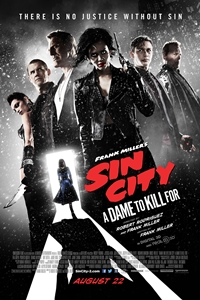 Sin City: A Dame to Kill For
Sin City: A Dame to Kill For
Starring Jessica Alba, Josh Brolin, Eva Green, Mickey Rourke, Joseph Gordon-Levitt, and Powers Boothe
Directed by Robert Rodriguez, Frank Miller
Rated R
Run Time: 102 minutes
Genre: Action/Crime
Opens August 22nd
by Michael Clawson of Terminal Volume
“I was born at night, but I wasn’t born last night,” Josh Brolin’s hard-boiled avenger says to the Dame to Kill For, who coos and saunters over to him, her hips swiveling in see-through négligée, her eyes white orbs blinking seductively in the shadows. The noir drips from the screen in puddles. Bring waders.
Sin City: A Dame to Kill For is less a sequel to 2005’s Sin City than it is an appendix of new characters and alternative viewpoints. I spent much of the movie trying to figure out why Marv, Mickey Rourke’s bruiser from the first movie, was alive and well and still picking fights in that dive bar where all the strippers leave their clothes on. The answer is, of course, that this is a prequel, though even that’s questionable as Bruce Willis, another dead guy from the first movie, turns up as a ghost.
So really, don’t worry about the details, because what you’re going into this for is the pulpy crime drama, the stylized violence and the oozing sexuality. It also helps that the movie looks completely bonkers — panels from the graphic novel are snipped from the page and pasted hastily onto the screen using a mixture of rubber cement, grit and blood. Scenes are shot in silhouette, with accents of vivid color, using unrealistic cell-shaded backgrounds, and with dramatically noirish compositions with eviscerating shadows. The visuals are no better than the first movie, but that’s OK because the first movie has yet to be topped, even as The Spirit and 300 — both children of Sin City author Frank Miller — have notably tried.
Like the first Sin City, this one tells several intertwining stories at once. The main character, or the most main character, is Dwight played by Josh Brolin. He’s one of James M. Cain’s loser-heroes, a Walter Neff with a trenchcoat and a bad attitude. Dwight is skulking through the night when Ava (Eva Green) turns up and baits him, hooks hims and then, gyrating her constantly exposed breasts, reels him in. She inspires all kinds of noir monologue from him, including this gem: “She’s late like always and like always she’s worth the wait.” Green, who slithers across the screen in fleshy curls, chews up the scenery and dialogue like she hasn’t eaten since June.
As Dwight gets wrapped up in Ava’s (and Ava’s Boob’s) dilemma, elsewhere we meet up with Marv (Rourke), who’s still the eternal protector of Nancy (Jessica Alba), a stripper who never strips, though she does a routine late in the movie that is terrifyingly aggressive even for a shady biker bar. Nancy was in the original film, and she returns here with little to do, even as she attempts to murder Senator Roark (the joyfully vile Powers Boothe), whose reach into Sin City’s criminal underworld is vast. Roark also figures prominently in a plotline involving Johnny (Joseph Gordon-Levitt), a young gun with a sixth sense about gambling. Like Brolin’s character, Gordon-Levitt is given lots of Raymond Chandler-inspired dialogue. “Dammit, Johnny, hate yourself when you got the time,” says Johnny.
Film noir is a Hollywood staple, and easy to mock, and Sin City lampoons it more than it honors it. But that’s not a complaint, because noir is limitless, from the high school drama Brick to the outwardly spiraling Memento. The genre has transcended Chinatown and Double Indemnity to include Sin City and all its high-contrast, black-and-white ultra-stylization. That being said, the franchise can feel very gimmicky and there are times when the plots are victims to the film’s over-simplification of noir themes. Christopher Meloni has a brief chapter where he’s required to play a smitten detective to Ava’s femme fatale. At no fault of Meloni or Green, the sequences feel hammy and overplayed, and they reveal limitations to Sin City’s hyper-noir.
All in all, though, this is a taut sequel with some notable performances — mostly Rourke, Brolin and Green — as well as some memorable minor performances, including ones by Juno Temple, Lady Gaga, Ray Liotta and a hilarious turn by Christopher Lloyd as a skeevy doctor-for-hire. The film is directed again by Robert Rodriguez and Frank Miller, who must have had fun bringing Miller’s violent pages to the screen. Rodriguez might just be the king of exploitation, schlock, cult and other varieties of novelty B-movies, and Sin City: A Dame to Kill For is further proof he has no interest in directing a “normal” movie. That’s fine by me.
Lastly, I don’t normally mention this, but if you can see Sin City in 3D do it. The graphical nature of the film, and the way it jumps out of comic panels, creates an interesting three-dimensional effect that is unique to this film. And it features the first pair of characters that are entirely designed for 3D — Ava’s Boobs. Decide for yourself if that's a good or a bad thing.

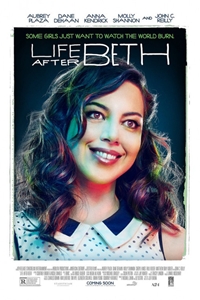 Life After Beth
Life After Beth
 If I Stay
If I Stay
 When the Game Stands Tall
When the Game Stands Tall
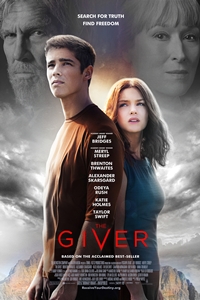 The Giver
The Giver
 The Expendables 3
The Expendables 3
 Calvary
Calvary
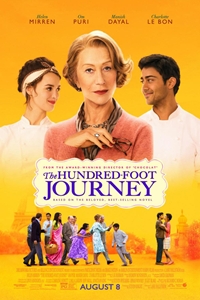 The Hundred-Foot Journey
The Hundred-Foot Journey
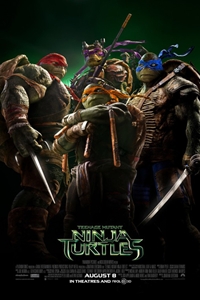 Teenage Mutant Ninja Turtles
Teenage Mutant Ninja Turtles
 Into the Storm
Into the Storm
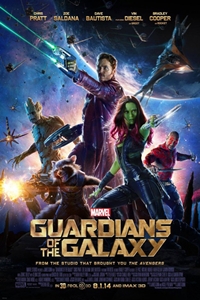 Guardians of the Galaxy
Guardians of the Galaxy
 Get On Up
Get On Up








